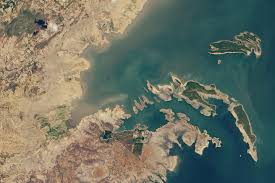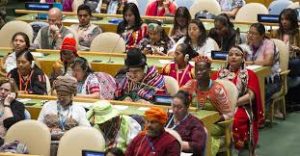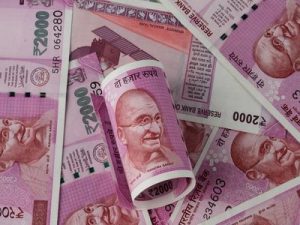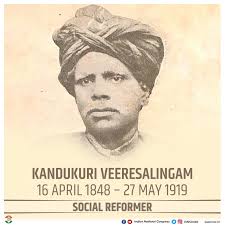Today’s Current Affairs: 17th April 2024 for UPSC IAS exams, State PSC exams, SSC CGL, State SSC, RRB, Railways, Banking Exam & IBPS, etc
Table of Contents
Kerogen : Hydrocarbon

The primary source of hydrocarbons in the rocky underground is called kerogen: lumps of organic matter.
- Kerogen is the portion of naturally occurring organic matter that is non-extractable using organic solvents i.e. it is insoluble in solvents.
- It represents about 90% of the organic carbon in sediments.
- It occurs in source rock and may expel hydrocarbons upon thermal cracking.
- Typical organic constituents of kerogen are algae and woody plant material.
- It consists of lighter as well as heavier hydrocarbons and acts like a precursor of oil and natural gas.
- They have a high molecular weight relative to bitumen, or soluble organic matter. Bitumen forms from kerogen during petroleum generation.
- Kerogens are described as Type I, consisting of mainly algal and amorphous (but presumably algal) kerogen and highly likely to generate oil; Type II, mixed terrestrial and marine source material that can generate waxy oil; and Type III, woody terrestrial source material that typically generates gas.
- The types of kerogens present in a rock largely control the type of hydrocarbons generated in that rock.
- Different types of kerogens contain different amounts of hydrogen relative to carbon and oxygen.
- The hydrogen content of kerogen is the controlling factor for oil vs. gas yields from the primary hydrocarbon-generating reactions.
Lake Kariba: Water levels Dropped

Water levels at Lake Kariba in Zimbabwe have dropped dramatically because of the latest El Nino drought.
- Lake Kariba is the world’s largest man-made lake and reservoir by volume. It lies along the border between Zambia and Zimbabwe. It is 200 kilometers downstream of Victoria Falls.
- The lake was filled following the completion of the Kariba Dam wall at its northeastern end, flooding the Kariba Gorge on the Zambezi River.
- The Kariba Dam consists of a double-arch wall.
- The wall extends across the Kariba gorge, creating a border crossing between Zambia and Zimbabwe.
- It provides considerable electric power to both Zambia and Zimbabwe and supports a thriving commercial fishing industry.
The 23rd Session Of The UN Permanent Forum On Indigenous Issues:

The 23rd session of the UN Permanent Forum on Indigenous Issues recently commenced in New York, United States.
- UN Permanent Forum on Indigenous Issues (UNPFII) was created in 2000 as an advisory body to the United Nations Economic and Social Council (ECOSOC) with a mandate to discuss indigenous issues related to economic and social development, culture, environment, education, health and human rights.
- According to its mandate, the Permanent Forum will:
- Provide expert advice and recommendations to the Council, as well as to programmes, funds and agencies of the United Nations, through the Council.
- Raise awareness and promote the integration and coordination of activities related to indigenous issues within the UN system.
- Prepare and disseminate information on indigenous issues.
- It is one of three UN bodies that is mandated to deal specifically with Indigenous Peoples’ issues.
- The others are the Expert Mechanism on the Rights of Indigenous Peoples and the Special Rapporteur on the Rights of Indigenous Peoples.
- It is comprised of sixteen independent experts, functioning in their personal capacity, who serve for a term of three years as members and may be re-elected or re-appointed for one additional term.
- Eight of the members are nominated by governments and eight are nominated directly by indigenous organisations in their regions.
Volcanic Vortex Rings:

Mount Etna, the largest volcano in Europe, and among the world’s most active volcanoes, has been sending up almost perfect rings of smoke into the air, which is a rare phenomenon that scientists refer to as volcanic vortex rings.
- Vortex rings are generated when gas, predominantly water vapour, is released rapidly through a vent in the crater.
- The vent that has opened up in volcano’s crater is almost perfectly circular, so the rings that have been seen are also circular.
- Volcanic vortex rings were first observed at Etna in 1724 and have since been documented at various volcanoes worldwide.
- These rings can remain in the air for up to 10 minutes but tend to disintegrate quickly if conditions are windy and turbulent.
- Mount Etna is a stratovolcano, which means it is composed of layers of lava, ash, and rocks that have accumulated over thousands of years of eruptions.
- Etna’s summit has five craters, which are responsible for most of the volcano’s eruptions and hundreds of lateral vents that can produce different types of eruptions, such as explosive, effusive, or mixed.
- It is located on the east coast of Sicily, an island in the Mediterranean Sea that belongs to Italy.
- Mount Etna has been erupting almost continuously since 1500 BC, making it one of the most active volcanoes in the world.
- Etna has been a UNESCO World Heritage Site since 2013.
Worst Deposit Crunch In 20 Years:

A recently released report revealed that despite robust credit growth, Indian banks faced difficulty in garnering deposits in 2023-24, resulting in the highest credit-deposit ratio in at least two decades.
- Indian banks are grappling with a severe deposit cash crunch that has not been witnessed in the past two decades.
- Currently standing at 80%, the credit-deposit ratio is at its highest since 2015.
- The CD ratio indicates how much of a bank’s deposit base is being utilized for loans.
- A deposit cash crunch occurs when banks have insufficient funds on hand to lend to their customers.
- As a result, businesses face challenges in operating smoothly, and employees may experience delays in receiving their salaries.
- This ripple effect can disrupt economic stability and financial well-being.
- Investors are increasingly pursuing high-return, equity-linked products due to strong market performance and growing financial awareness, presenting banks with the dual challenge of attracting deposits and supporting credit growth.
- A portion of mobilised deposits is also set aside for regulatory requirements such as cash reserve ratio (CRR) and statutory liquidity ratio (SLR), reducing lendable funds and intensifying competition for deposits.
- In recent quarters, banks used their surplus SLR holdings to boost credit growth amid slower deposit growth, but as SLR buffers shrink, they face the challenge of balancing deposit rate hikes with profitability.
- Banks raised deposit rates last fiscal to attract retail deposits amidst rising competition, alternative investment options, and a shift toward real assets.
- The merger of HDFC and HDFC Bank resulted in the incorporation of HDFC’s loans and deposits into the banking system, contributing to the overall figures.
Exercise DUSTLIK:

The Indian Army contingent departed for the 5th edition of India-Uzbekistan joint military Exercise DUSTLIK, scheduled from 15th to 28th April 2024 in Termez, Uzbekistan.
- Exercise DUSTLIK is a yearly event alternately conducted in India and Uzbekistan.
- The exercise aims to foster military cooperation, enhance combined capabilities, focus on joint operations in mountainous and semi-urban terrain, develop interoperability, and enhance bilateral relations.
- This edition of Exercise DUSTLIK involves personnel from combat support arms and services, including two Women Officers.
- The first-ever exercise “Dustlik” between India and Uzbekistan was in 2019 which focused on counter-terrorism.
Special Rupee Vostro Account (SRVA):

The Indian government has simplified the payment mechanism for traders importing pulses from Myanmar by implementing the Rupee/Kyat direct payment system through the Special Rupee Vostro Account (SRVA) via Punjab National Bank.
- SRVA is an account that domestic banks hold for foreign banks in the former’s domestic currency, the rupee, which allows domestic banks to provide international banking services to their clients who have global banking needs without having to be physically present abroad.
- The SRVA is an additional arrangement to the existing system that uses freely convertible currencies and works as a complimentary system.
- It has three important components:
- All exports and imports must be denominated and invoiced in domestic currency(e.g. Rupee)
- The exchange ratebetween the currencies of the trading partner countries would be market-determined
- The final settlement also takes place in domestic currency (e.g. Rupee)
Satellite Calls:

Chinese scientists have developed the world’s first satellite that enables smartphones to make direct calls through it, bypassing mobile towers.
- This innovation aims to address communication challenges during emergencies, such as natural disasters.
- The satellite, part of the Tiantong Project, symbolizes China’s commitment to enhancing communication resilience.
- The Tiantong-1 series, involving three satellites, orbits synchronously at 36,000 kilometres altitude, potentially revolutionizing communication across the Asia-Pacific region.
- Huawei introduced the first satellite-compatible smartphone, followed by other Chinese manufacturers.
Import Restrictions On Solar PV Cells:

Recent government orders on attempts to increase local sourcing of solar modules to support India’s renewables manufacturing ecosystem has been widely reported in the media as import restrictions.
- Ministry of New and Renewable Energy’s (MNRE), on March 29 ordered to re-implement its 2021 notification of an ‘Approved List of Models and Manufacturers of Solar Photovoltaic [PV] Modules’, also called the ALMM list.
Approved List of Models and Manufacturers of Solar Photovoltaic [PV] Modules:
- This list consists of manufacturers who “are eligible for use in Government Projects/Government assisted projects/ projects under Government schemes & programmes including projects set up for sale of electricity to the Central and State Governments.”
- While the government did not give an explicit reason for this, it has been reported that it stems from concerns and demands of renewable power producers who had secured sale contracts with the government before these rules were issued, when solar modules and cells were overwhelmingly imported from China at highly competitive rates.
- India’s domestic renewables sector, at the time, was unlikely to meet the spike in demand for solar power production equipment at rates offered by Chinese manufacturers.
- The government’s re-introduction of this rule has been premised on the estimation that following measures, such as the Production Linked Incentive (PLI) scheme, India’s domestic sector has boosted its production capacities and bettered price competitiveness to meet local demand.
Shrinkflation : Concern

Shrinkflation is again became a topic of concern within the fast-moving consumer goods (FMCG) industry.
- As input costs rise, companies are faced with the challenge of maintaining profitability while also addressing consumer needs.
- Shrinkflation refers to the practice of reducing the size of a product while maintaining its sticker price.
- It’s a form of hidden inflation.
- Companies, especially in the food and beverage industries, employ this strategy to stealthily boost profit margins or maintain them in the face of rising input costs.
- Shrinkflation involves reducing the quantity or volume of a product while keeping the retail price unchanged.
- Companies use shrinkflation to improve profit margins without overtly raising prices.
- In macroeconomic context shrinkflation can also refer to a situation where the economy contracts while experiencing rising prices.
- Causes:
- Higher Production Costs: Rising costs of ingredients, raw materials, energy, and labour lead companies to downsize products.
- Intense Market Competition: In competitive markets, producers seek ways to maintain customer favour and profits simultaneously.
Men5CV : Meningitis Vaccine

Nigeria has become the first country in the world to roll out a new vaccine (Men5CV) recommended by the World Health Organization (WHO) to protect against five strains of the meningococcus bacteria.
- The vaccine is funded by Gavi, the Vaccine Alliance, which supports lower-income countries with routine vaccination against meningitis.
- Nigeria is one of the 26 meningitis hyper-endemic countries in Africa and experienced an outbreak of Neisseria meningitidis (meningococcus) serogroup C, leading to a significant number of cases and deaths.
- To address the outbreak, a vaccination campaign was undertaken to initially reach more than one million people aged 1-29 years.
- Meningitis is a serious infection that causes inflammation of the membranes surrounding the brain and spinal cord.
- It can be caused by viral, bacterial, fungal, and parasitic pathogens, with bacterial meningitis being the most severe.
- Symptoms include headache, fever, and stiff neck, and the disease can be disabling or fatal if not treated promptly.
Kandukuri Veeresalingam : Birth Anniversary

Kandukuri Veeresalingam, born on April 16, 1848, was a prominent writer and social reformer from the Madras Presidency, British India.
- He is often hailed as the father of the Telugu Renaissance movement and is known for his significant contributions to literature and social reform in Andhra Pradesh.
- Veeresalingam was a versatile scholar proficient in Telugu, Sanskrit, and Hindi.
- He considered literature as a powerful tool to combat social injustices and used his writings to advocate for change.
- He is credited with writing the first novel in Telugu literature, ‘Rajasekhara Charitra’, and other literary works such as plays and journals promoting women’s education.
- He was known by the title Gadya Tikkana, or the Tikkana of Prose’.
- Brahmo Samaj is nspired by the principles of Brahmo Samaj leaders like Raja Rammohan Roy, Veeresalingam established Andhra Pradesh’s first Brahmo Mandir in Rajahmundry in 1887.
- His involvement with the Brahmo Samaj reflected his progressive beliefs and commitment to social reform. He also started ‘Hithakarini School’ in 1908.
- Veeresalingam’s activism extended to the political realm, as he was among the attendees of the first Indian National Congress meeting in 1885.




